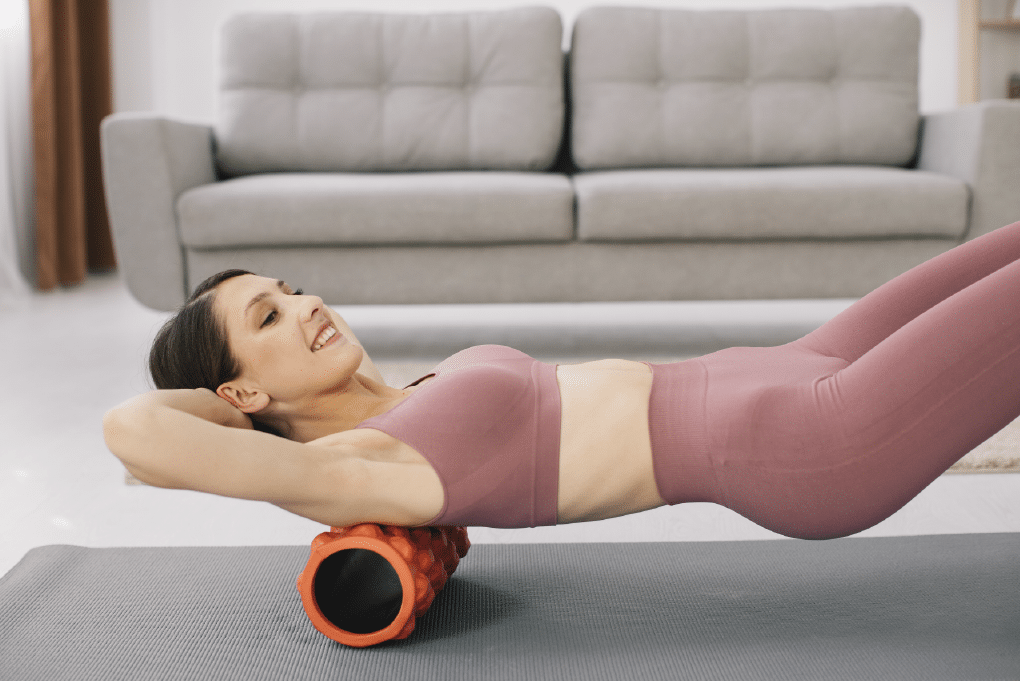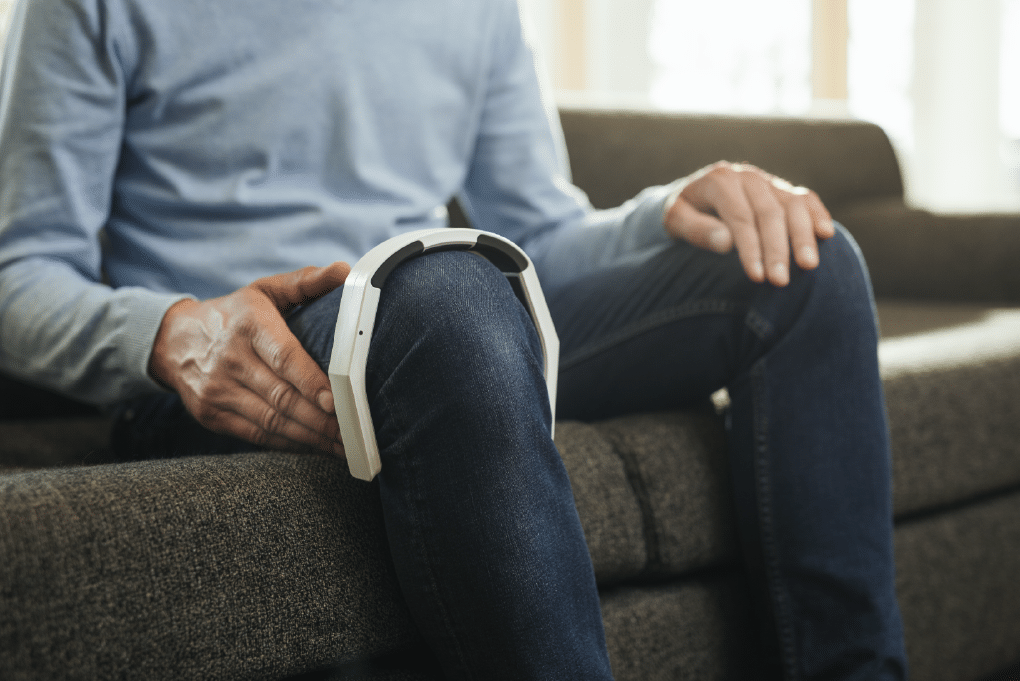The key is in your heart
Table of Contents
When you do the training, it’s usually pleasant, as your body is flushed with endorphins. The problem begins the next day when the sore muscles make you regret all the heavy activity you’ve done.
Why does it hurt so much?
The reason for your suffering is the build-up of toxic waste. During intense exercise, muscles produce and release lactate. It’s a useful short-term source of energy, but it comes at a price. Lactate changes the surrounding muscle tissue, making it more acidic. That irritates nerve endings, leading to pain and impaired muscle function.
The good news is that your body is equipped with its own natural mechanism of cleaning up: circulation. Your blood supports cells with nutrients and takes the waste away, letting your tissue regenerate.
This should be enough… for lower amounts of exercise. If your training is of a large volume, you may need to boost the regenerative process by stimulating your circulation.
This is exactly the mechanism of action of many methods of regeneration: applying pressure, change in temperature, or other stimulation to increase blood flow, flush out the toxins and provide nutrients.
Be your own massage therapist
Probably the oldest technique of regeneration is massage. Squeezing and pinching the body tissues increases blood flow, as well as helps to release the tension in the muscles.
The problem is that you may not always have access to a massage therapist. Sessions may be too costly, or it may be difficult to fit them into your already packed schedule. Fortunately, you can massage yourself using foam rollers. It won’t replace physiotherapy but may still bring excellent results.
Foam rolling works both on your cardiac and neural systems. On the one hand, it allows the blood to flow more easily and makes veins and arteries elastic. On the other hand, it stimulates the parasympathetic nervous system.
Putting it simply, your nervous system has two divisions: the sympathetic one stimulates the organism for action (for instance when you’re training), and the parasympathetic has the opposite function, making your body slow down and relax.
Foam rolling gives a wake-up nudge to the latter, speeding up the recovery.
Foam rolling is not only used for regeneration. You can also do it before a training session to improve performance and range of motion.
How to use it?
To reap the benefits of foam rolling, most recovery studies recommend rolling a specific muscle group for 30-60 seconds, repeated for 3-5 sets with short rest periods in between.

Recovery doesn’t have to be passive
If you think about what usually gets your heart pumping faster, the answer is simple: exercising. However, it seems a little counterintuitive to deal with the effects of exercise… by exercising more. Could this possibly work?
The answer is yes, as long as your exercise is low-intensity. Active Recovery is a method of regeneration that uses mild activities such as walking, swimming, cycling, or yoga to increase circulation and promote recovery. It also has an analgesic effect, reducing the pain and stiffness of the sore muscles after your regular training.
There are three rules when it comes to using Active Recovery. Firstly, your activity needs to be aerobic. Don’t try lifting weights: what you need is the kind of movement that will engage the cardiac system without putting too much strain on your body.
Secondly, whatever you do has to be different from your usual workout routine. If you are a runner, try some cycling. If you are a competitive swimmer, consider walking. And if you do triathlon… how about yoga?
The third rule is that the session has to be low-intensity. Do it at 30 to 60% of your aerobic capacity, for the time of 10 to 30 minutes.
Electromagnetic stimulation
Apart from self-massage and active recovery, you can also boost regeneration on the cellular level using a low-intensity electromagnetic field.
PEMF (Pulsed Electromagnetic Field) therapy is a non-invasive treatment method used for over 50 years.
PEMF improves circulation, just like the methods we discussed before. But its mechanism of action is much broader. The electromagnetic field penetrates the tissues and stimulates the movement of ions. Studies have shown that it helps to restore the homeostatic functions of cells and activate both immune and regenerative processes.
At the same time, the kind of stimulation used in the PEMF method is not in any way “unnatural”. It uses the same electromagnetic frequencies which are already ubiquitous in the body, and found during postural muscle activity or walking.
Many studies conducted have shown that PEMF can aid in healing wounds by stimulating the growth of bone tissue and new blood vessels. It has been effectively used for treating conditions like osteoporosis. Even if you suffer from sore muscles rather than a broken bone, on a biological level there are similarities: after you’ve put your body through serious stress during hard training, it needs to rebuild the wounded muscle fibers. Electromagnetic stimulation only makes it faster.

The key to regeneration lies in using the same methods already employed by your body, at the same time stimulating their more efficient use. All the methods we discussed in this article can be either used separately or combined for the most effect (just not at the same time, please!)
If you are a professional or amateur athlete and want to maximize your gains, boosting regeneration means faster progress and less risk of injury.
But maybe your ambitions are not that high. Maybe you don’t want to compete, but just want to stay fit. Maybe you lead a dangerous life sitting behind a desk all day, and your doctor forced you to take up activity to prevent your spine from falling apart.
Having to endure post-training pain is what usually deters people from sports. Using the strategies of regeneration we discussed can help to take away the unpleasant part, making the prospect of physical activity more plausible.
References
Hendricks, Hill, H., Hollander, S. den, Lombard, W., & Parker, R. (2020). Effects of foam rolling on performance and recovery: A systematic review of the literature to guide practitioners on the use of foam rolling. Journal of Bodywork and Movement Therapies, 24(2), 151–174. https://doi.org/10.1016/j.jbmt.2019.10.019
Adamczyk, Gryko, K., & Boguszewski, D. (2020). Does the type of foam roller influence the recovery rate, thermal response and DOMS prevention? PloS One, 15(6), e0235195–e0235195. https://doi.org/10.1371/journal.pone.0235195
Ross, Zhou, Y., Mccall, C. E., Soker, S., & Criswell, T. L. (2019). The Use of Pulsed Electromagnetic Field to Modulate Inflammation and Improve Tissue Regeneration: A Review. Bioelectricity, 1(4), 247–259. https://doi.org/10.1089/bioe.2019.0026
Gronwald, T.; Hoos, O.; Hottenrott, K. Effects of a Short-Term Cycling Interval Session and Active Recovery on Non-Linear Dynamics of Cardiac Autonomic Activity in Endurance Trained Cyclists. J. Clin. Med. 2019, 8, 194. https://doi.org/10.3390/jcm8020194
Raeder, Wiewelhove, T., Schneider, C., Döweling, A., Kellmann, M., Meyer, T., Pfeiffer, M., & Ferrauti, A. (2017). Effects of active recovery on muscle function following high-intensity training sessions in elite Olympic weightlifters. Advances in Skeletal Muscle Function Assessment, 1(1), 3–12.
Disclaimer
NeoRhythm has not been evaluated by the FDA. These products do not claim to diagnose, treat, cure, or prevent any medical conditions. Always consult your medical doctor regarding any health concerns.

